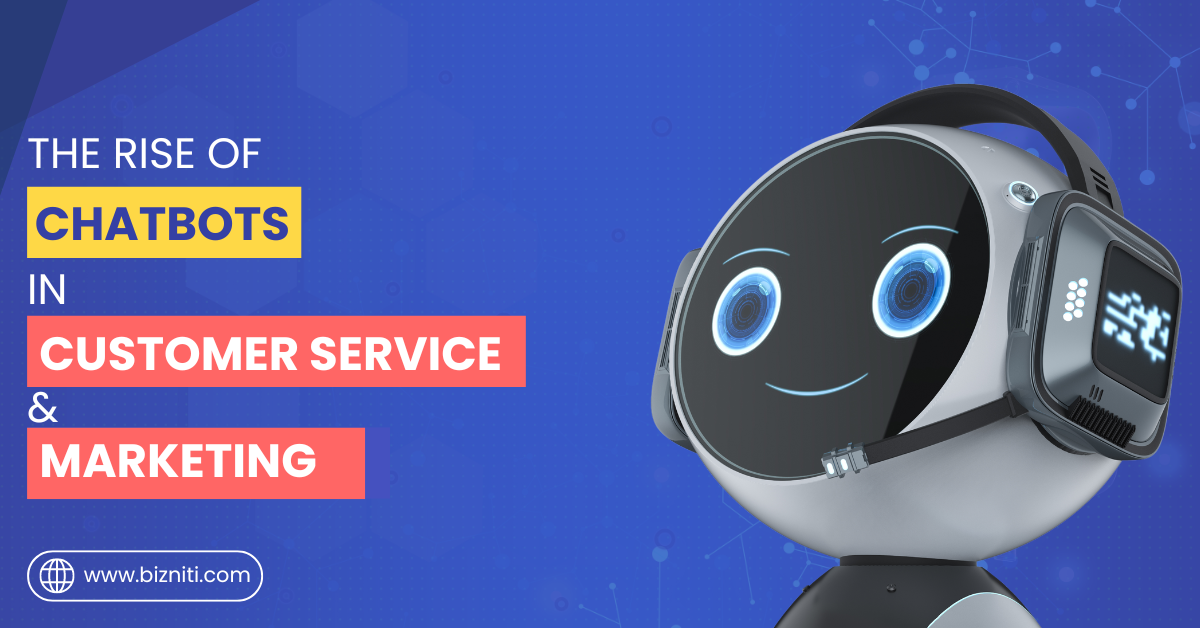Chatbots, which provide a smooth and effective means of communication across numerous digital channels, have completely changed the way businesses engage with their clientele. Chatbots are becoming more complex as technology develops and are now an essential part of marketing and customer support plans. Let’s take a closer look at chatbots and examine their increasing importance in the modern digital environment.
What Are Chatbots and How Do They Work?
Computer programs called chatbots are made to mimic human communication, usually through text or voice exchanges. They interpret and react to user queries in real time using artificial intelligence (AI) and natural language processing (NLP) technologies. Chatbots can be included in mobile apps, social media channels, messaging services, and websites to offer users immediate help and support.
Benefits of Using Chatbots in Digital Marketing
Availability around-the-clock: Chatbots may offer customer service around the clock, answering questions and resolving problems even beyond regular business hours, increasing client satisfaction and loyalty.
Enhanced Efficiency: Chatbots streamline operations and cut down on response times by automating repetitive activities and FAQs, freeing up human agents to concentrate on more intricate and valuable conversations.
Customized Interactions: By examining user information and preferences, chatbots can provide content, promotions, and recommendations that are specific to each user’s requirements and preferences.
Scalability: Chatbots may quickly grow to manage a bigger volume of inquiries without the need for additional human workers, maintaining consistent service quality as organizations expand and customer demand rises.
Best Practices for Implementing Chatbots on Your Website
Establish Specific Goals: Establish clear objectives and use cases for your chatbot installation, such as customer service, lead generating, or sales support.
Create Interfaces That Are Easy to Use: To effortlessly guide users through interactions, create chatbot interfaces that are easy to use and include clear prompts, options, and navigation pathways.
Offer Human Escalation: Give users the choice to contact human support when needed to facilitate a seamless transition for delicate or difficult questions.
Update and train frequently: Keep an eye on and evaluate the chatbot’s performance all the time. As it gains more accuracy, relevance, and efficiency over time, updates its training data and knowledge base.
Future Trends: The Evolution of Chatbots in Marketing
Learning: As AI and machine learning continue to progress, chatbots will also, allow for increasingly complex natural language comprehension, context awareness, and predictive skills.
Multimodal and Voice-Based Interactions: Voice-based chatbots will become increasingly popular as voice assistants and smart speakers become more commonplace. This will provide consumers with a more natural and hands-free method of interacting with brands.
Conversational Commerce: Chatbots will be essential to conversational commerce, helping with customer service, product recommendations, and transaction processing on messaging apps and social media.
Empathy and Emotional Intelligence: In the future, chatbots will be endowed with emotional intelligence skills that will enable them to recognize and react to user emotions, fostering more empathy and rapport in communication.
In summary, chatbots are a revolutionary technology that is changing the face of marketing and customer support. In a world where digital is becoming more and more important, organizations may improve customer experiences, expedite processes, and spur growth by utilizing chatbots efficiently. The future is full of great opportunities for the development and incorporation of chatbots into every aspect of the consumer journey as technology keeps advancing.




